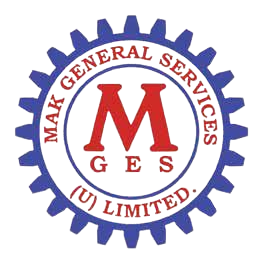Power quality affects the reliability, efficiency, and profitability of industrial facilities. Enabling power quality monitoring and mitigation can deliver significant ROI. However, existing facilities—which we refer to here as brownfield sites—present distinct considerations compared to new construction (or greenfield). This blog outlines when and why you should investigate power quality for brownfield sites and how to do it in ways that deliver optimal ROI.
The 10x rule
Improved power quality benefits all industrial facilities, from food plants to biotech labs. It extends equipment life, reduces interruptions, and cuts costs. However, for brownfield sites, retrofits can be complex. Three challenges stand out: integrating new and old technology, potential production disruption, and unknown changes to electrical systems that come to light during upgrades.
Though retrofitting is expensive, it’s strategic. It’s estimated to be ten times costlier than integrating systems in a greenfield site. However, poor power quality can result in even higher costs through equipment failure and downtime. A downtime event can cost up to 10 times more than retrofitting the brownfield.
Retrofitting does more than improve current operations; it also sets your facility up for long-term success. Investing in these systems makes you better equipped to comply with future regulations that could mandate higher efficiency standards. Such standards are also increasingly a requirement in contracts and customer specifications. Facilities with energy efficiency will have a competitive edge in securing those contracts. Therefore, the upfront investment in retrofitting can offer a return in operational savings and market positioning.
When to prioritize power quality for brownfield sites
Managing a brownfield site means juggling daily operational demands, which can push long-term improvements like power quality to the back burner. However, taking steps to address these issues is important for both immediate efficiency and future sustainability. How do you decide?
First, look at your utility bills, paying particular attention to power factor fees. These early indicators of electrical inefficiencies can reveal systemic issues not apparent in daily operations. Addressing the root cause can yield immediate and long-term cost savings.
Second, keep a close eye on the behavior of your electrical systems. Nuisance tripping in circuit breakers or inconsistent lighting performance aren’t just annoyances; they’re warning signs. They suggest underlying issues that could affect the performance and lifespan of equipment. Ignoring them can lead to costly downtime or even equipment failure.
Finally, consider your equipment. Do you operate items susceptible to electrical issues, such as variable-speed drives, medical imaging devices, CNC machines, or industrial automation controllers? Conversely, do you use equipment that can cause power quality issues, such as old motors, arc welders, HVAC systems, large compressors, uninterruptible power supplies (UPS), or even elevators? In either case, power quality analytics should be a priority.
Justifying the cost of brownfield updates
Brownfield projects can draw from either Capital Expenditure (CapEx) or Operating Expenditure (OpEx), each with distinct goals. Facility operators are often the first to suggest these upgrades because better monitoring makes their jobs easier. However, managers with CapEx budgets may be looking for fast ROI through immediate savings.
Successful retrofit projects require balancing these priorities. A phased upgrade approach can address critical needs first, providing immediate benefits that justify future expenditures. This method aids in planning, minimizes disruptions, and optimizes costs, aligning the objectives of facility operators and financial managers.
A typical sequence might look something like the following:
- Install sensors: Place sensors in the main switchgear for baseline power data. This provides an overview of your facility’s energy performance.
- Monitor and act: Analyze data using specialized tools and take corrective actions, emphasizing those with the highest return on investment first.
- Expand sensing: After initial corrections, add sensors at feeder levels and critical equipment for more localized data and faster mitigation of outages or other power issues.
- Implement advanced analytics: Adopt more sophisticated tools that give you deeper insights and help improve your strategic planning over time.
Adding intelligence
Integrating advanced analytics and software into your strategy helps turn raw data into actionable insights, enables real-time decision-making, and supports predictive capabilities. With the right solutions, you can address problems quickly and engage in proactive maintenance to reduce the likelihood of downtime.
Deciding between an in-house or vendor-managed analytics service will depend on your organization’s specific needs and internal expertise. A vendor-managed service offers specialized skills to get the most from data analytics without the burden of system maintenance. Either way, the smarter your power system, the greater your operational control, productivity, and cost management advantages. This makes analytics an operational enhancement and a sound financial investment.



